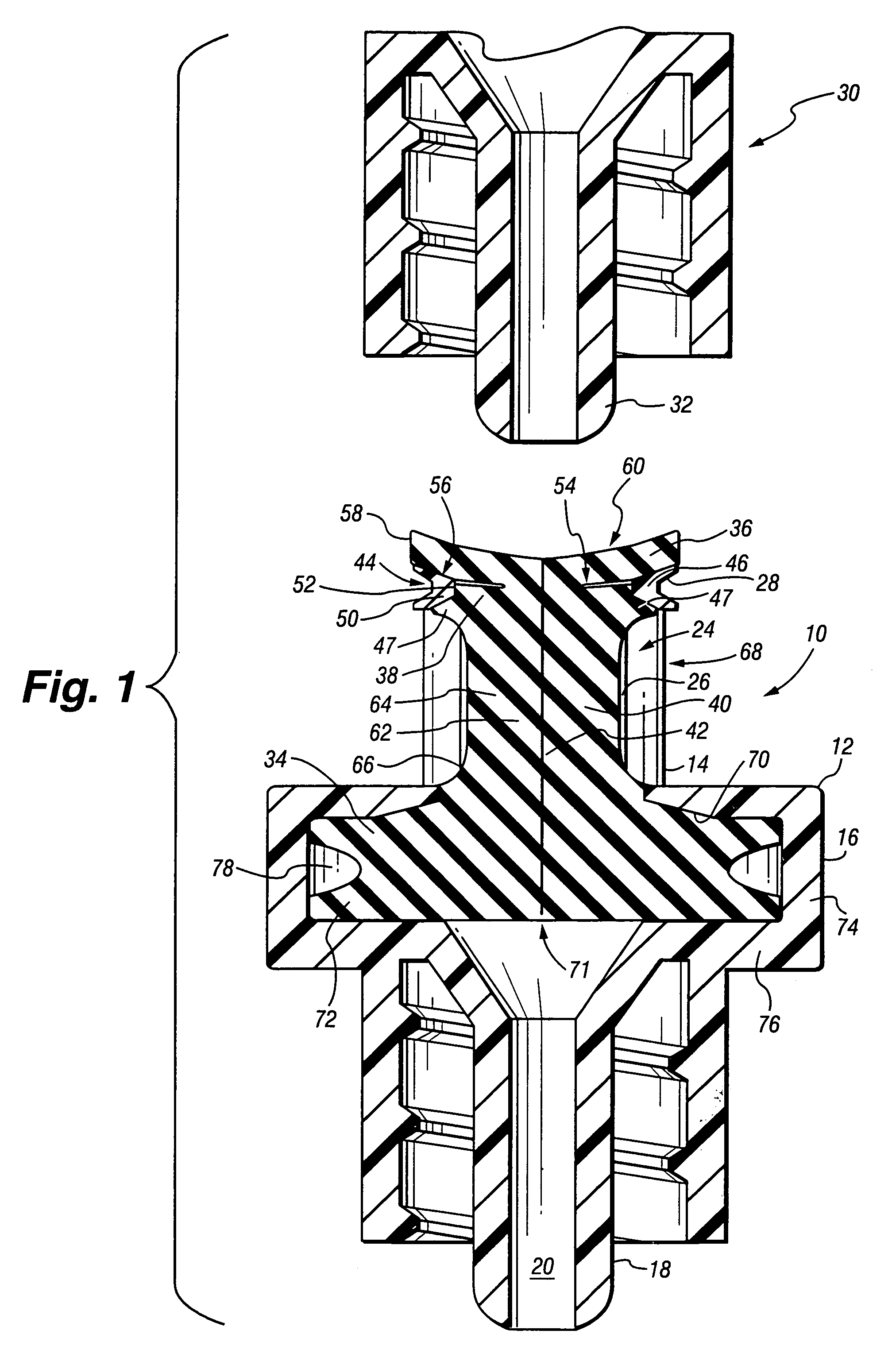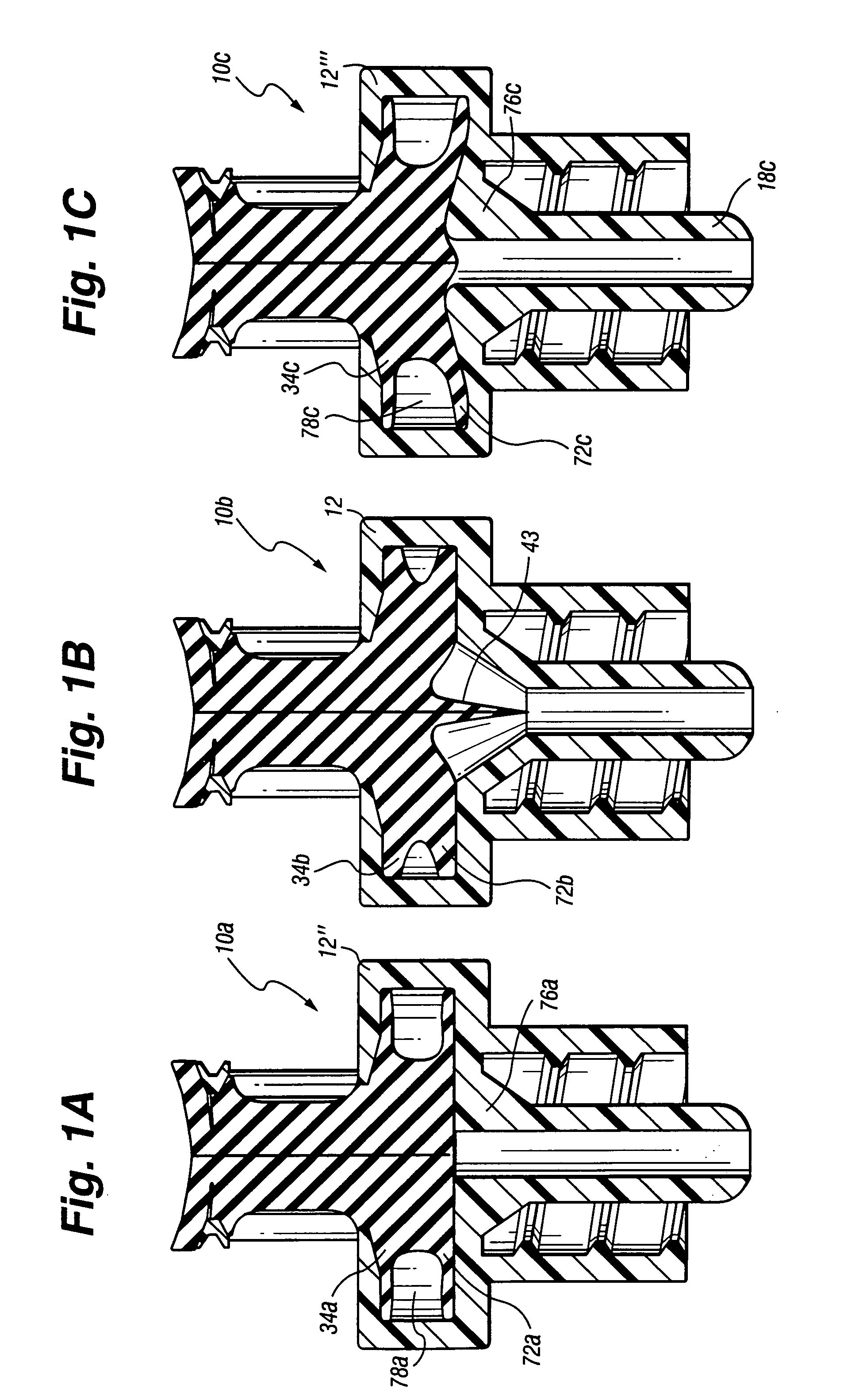Self sealing luer receiving stopcock
a self-sealing, stopcock technology, applied in the direction of packaging foodstuffs, pharmaceutical containers, packaged goods types, etc., can solve the problems of high cost of the nascent “needle free” medical fluid access system, bacteria and fluid gaining entry into the circumferential crevice are displaced back and forth, and are not accessible to wiping, etc., to achieve precise and focused membrane stretching, thin membrane, and weaken the membrane
- Summary
- Abstract
- Description
- Claims
- Application Information
AI Technical Summary
Benefits of technology
Problems solved by technology
Method used
Image
Examples
Embodiment Construction
[0124]As shown in FIGS. 1, 2, and 3, the luer lock receiver 10 comprises a housing 12 including an proximal portion 14, a central portion 16, and a distal portion 18 having a distal lumen 20. The proximal portion14 has an inlet 22, and interior walls 24 defining an intermediate space or bore 26 and outer threads 28 and is sized to be threadably received into a conventional luer lock 30 with male luer tip and a surrounding female threaded end. Bore 26 is sized to receive a conventional luer cannula 32. A septum 34 has a proximal portion that, in this embodiment, includes a widened upper portion 36 and a narrower lower portion 38. The septum 34 further has an extension 40 that is received intermediate the interior walls of the housing 12. A central slit 42, sized to snugly receive the luer cannula 32, is provided to extend from adjacent the upper face of the upper portion 36, through the proximal portion of septum 34 and at least partly through the extension 40. In the embodiment of F...
PUM
 Login to View More
Login to View More Abstract
Description
Claims
Application Information
 Login to View More
Login to View More - R&D
- Intellectual Property
- Life Sciences
- Materials
- Tech Scout
- Unparalleled Data Quality
- Higher Quality Content
- 60% Fewer Hallucinations
Browse by: Latest US Patents, China's latest patents, Technical Efficacy Thesaurus, Application Domain, Technology Topic, Popular Technical Reports.
© 2025 PatSnap. All rights reserved.Legal|Privacy policy|Modern Slavery Act Transparency Statement|Sitemap|About US| Contact US: help@patsnap.com



